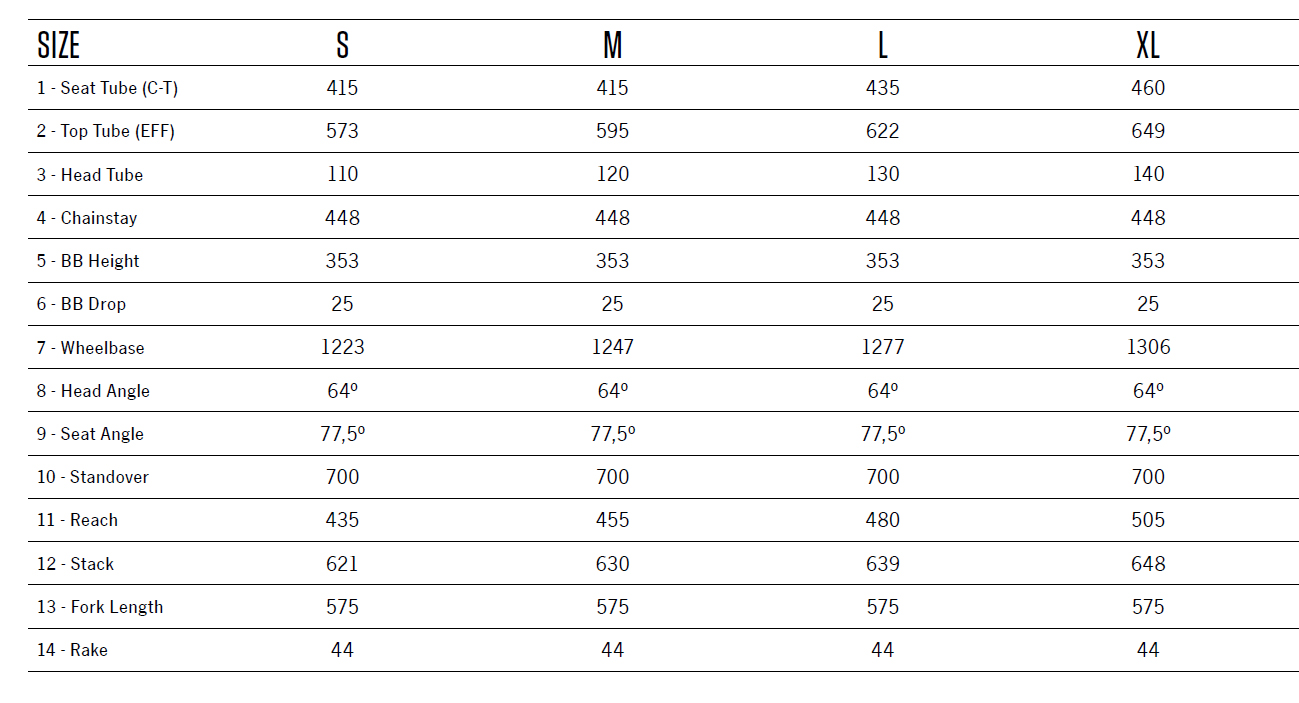2023 Orbea Wild
Wheel Size: 29’’
Travel: 160 mm rear / 160 or 170 mm front
Geometry highlights:
- Sizes offered: S, M, L, XL
- Headtube angle: 64°
- Seat tube angle: 77.5°
- Reach: 480 mm (Size Large)
- Chainstay length: 448 mm (all sizes)
Material: Aluminum and carbon fiber versions available
Price: Complete bikes $5,700 to $12,000
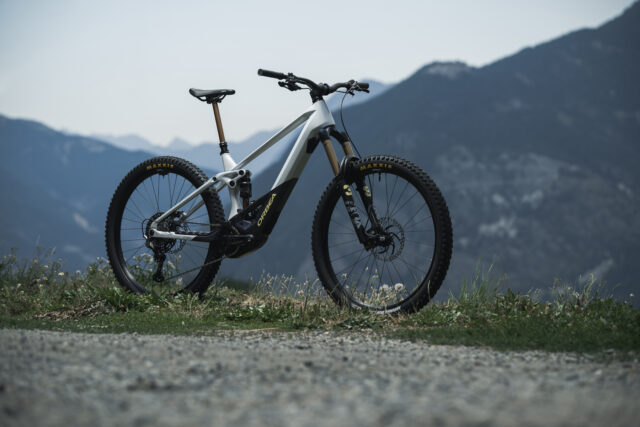
Intro
The Orbea Wild has always been an e-MTB, but it’s evolved a whole lot over the years — beginning as a hardtail before growing to become something like an electrified version of their Rallon Enduro bike with the latest generation that came out today. There’s a lot of info to cover here, so let’s get right to it:
The Frame
The Wild gets 160 mm of rear travel from Orbea’s familiar four-bar suspension layout, with a dropout-concentric pivot. As with the prior-generation Wild (and in contrast to the Rallon), the shock is mounted vertically to help with packaging the motor and drive unit, but the suspension kinematics (more on those in a minute) are quite similar to those of the Rallon despite the visual differences. Most builds come with a 160mm-travel fork, but Orbea condones a 170 mm one as well and offers the longer option as the default size on the M-LTD build.
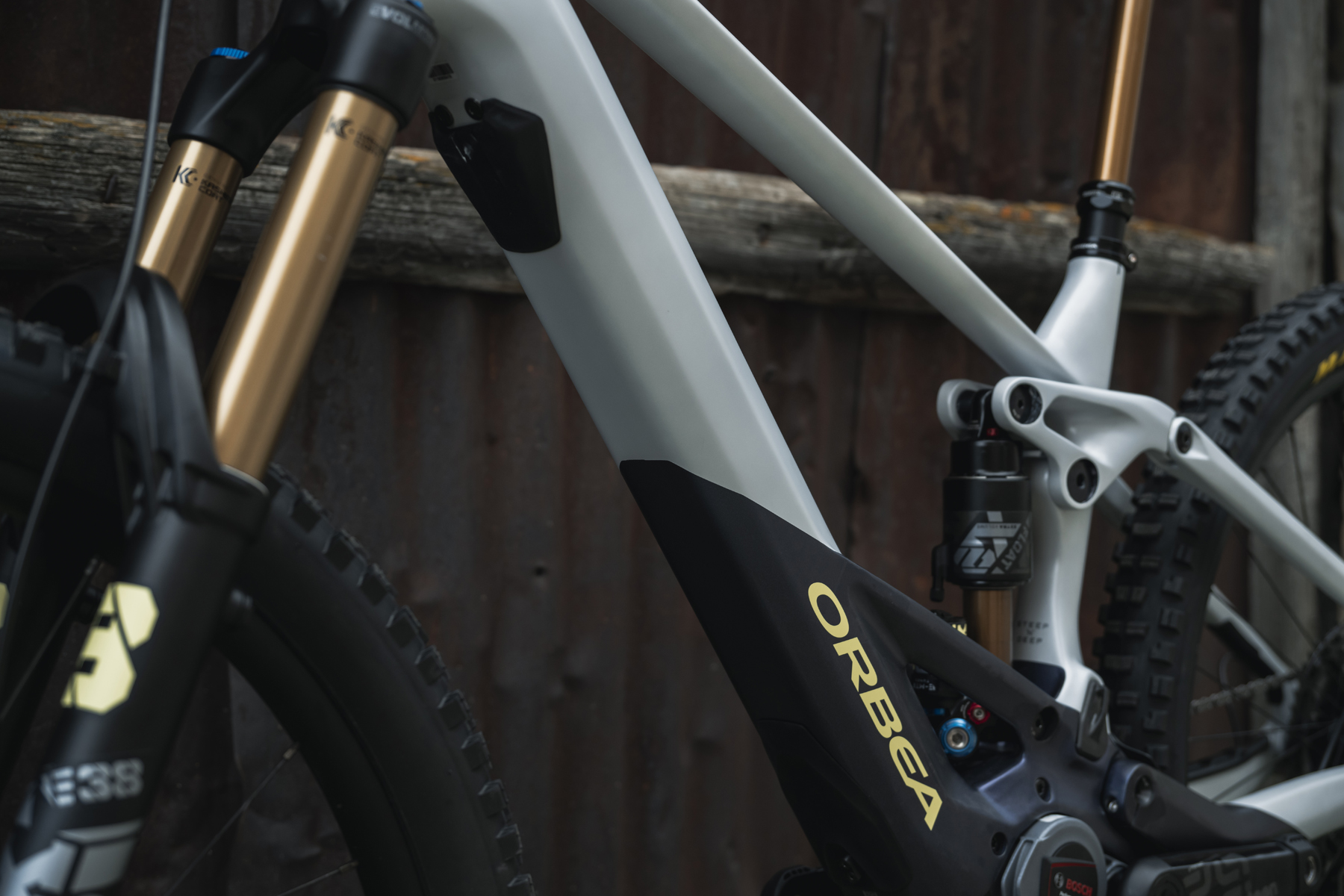
Orbea offers both aluminum and carbon fiber versions of the Wild, and Orbea has made refining the stiffness of both frame versions a major point of emphasis. In their estimation, an e-bike frame needs to be about 10% stiffer than an equivalent standard bike in order to handle the extra weight and loads that an e-bike introduces, and they also state that adding a window in the downtube to make for a removable battery reduces the frame stiffness dramatically — by as much as 70%. So with the new Wild, Orbea has opted for a fixed battery instead. The battery is removable for service or replacement after removing the drive unit from the frame, but doing so is fairly involved and isn’t meant to be done regularly.
But forgoing the battery door has apparently paid off structurally. Orbea says that the new Wild frame is more than 50% stiffer than the old one while also saving about 900 g (for the carbon versions) — and that it’s also about 10% stiffer than the Rallon frame while only weighing about 70 g more (with the battery and drive unit removed, of course). Speaking of the battery and drive unit, all versions of the Wild come with a Bosch Performance CX motor (with the top-tier Wild M-LTD getting the CX-Race version) and either a 625 Wh or 750 Wh battery, depending on build kit, though the battery size can be swapped through Orbea’s My-O customization program if you’re so inclined.
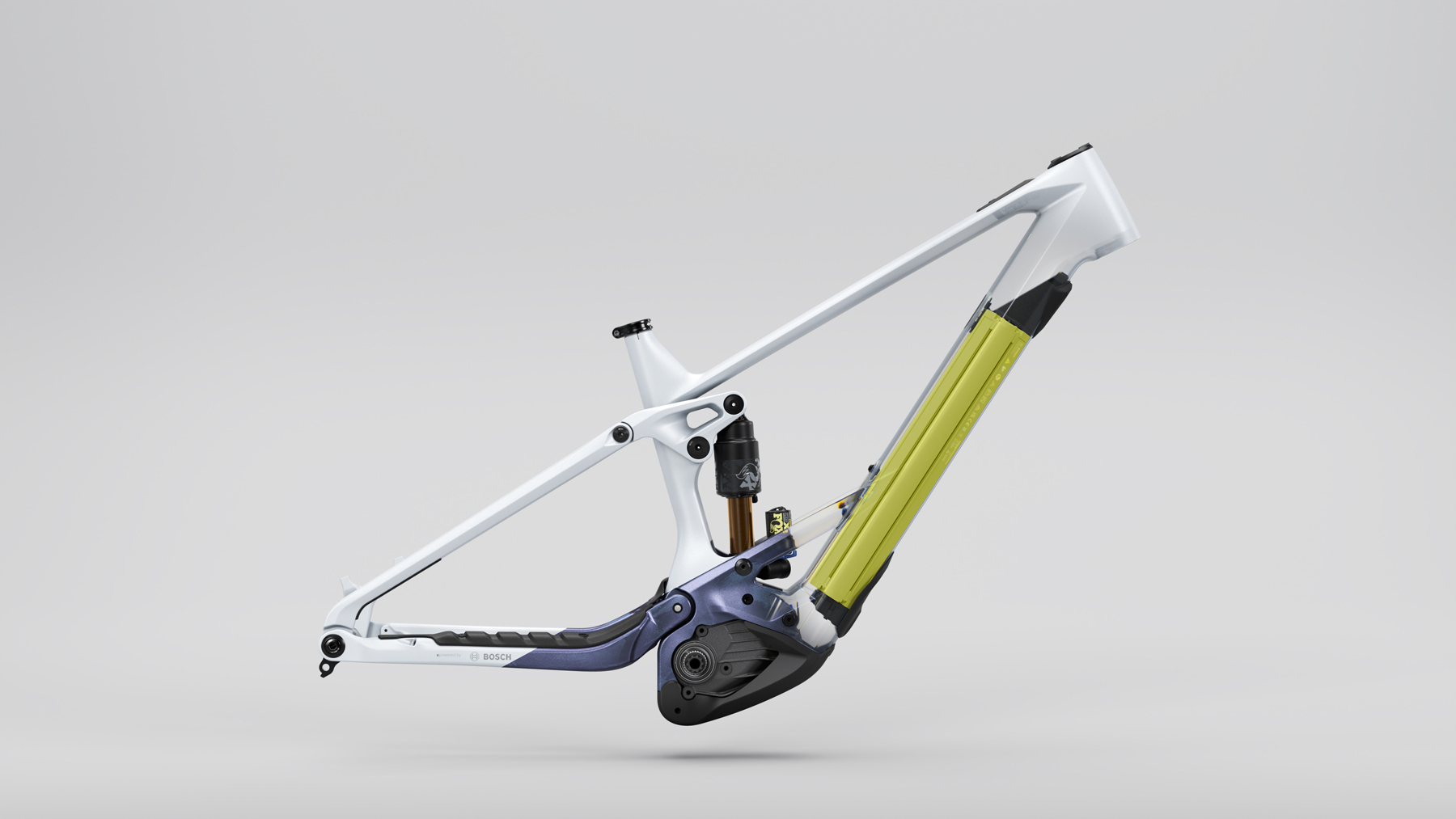
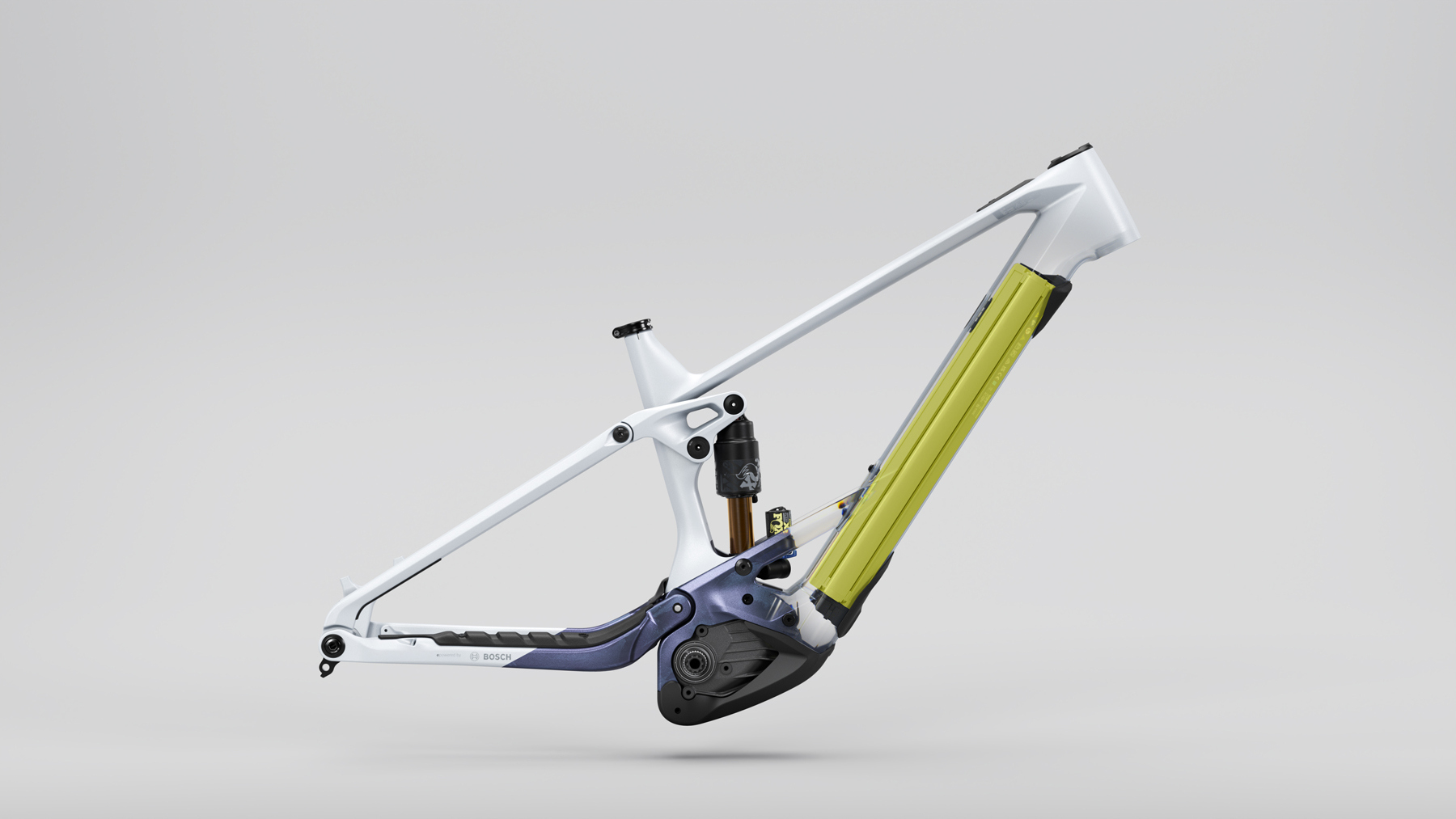
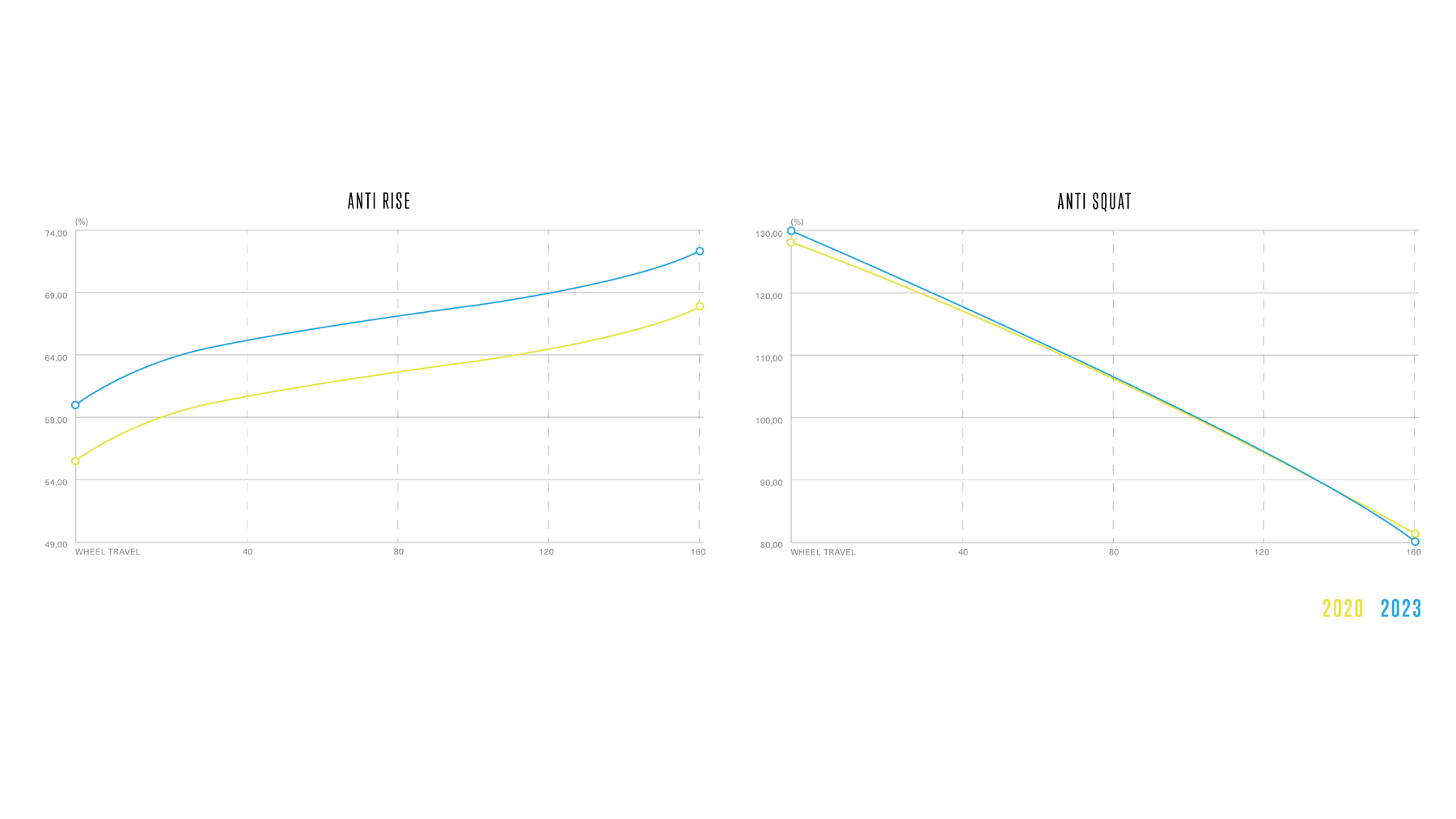
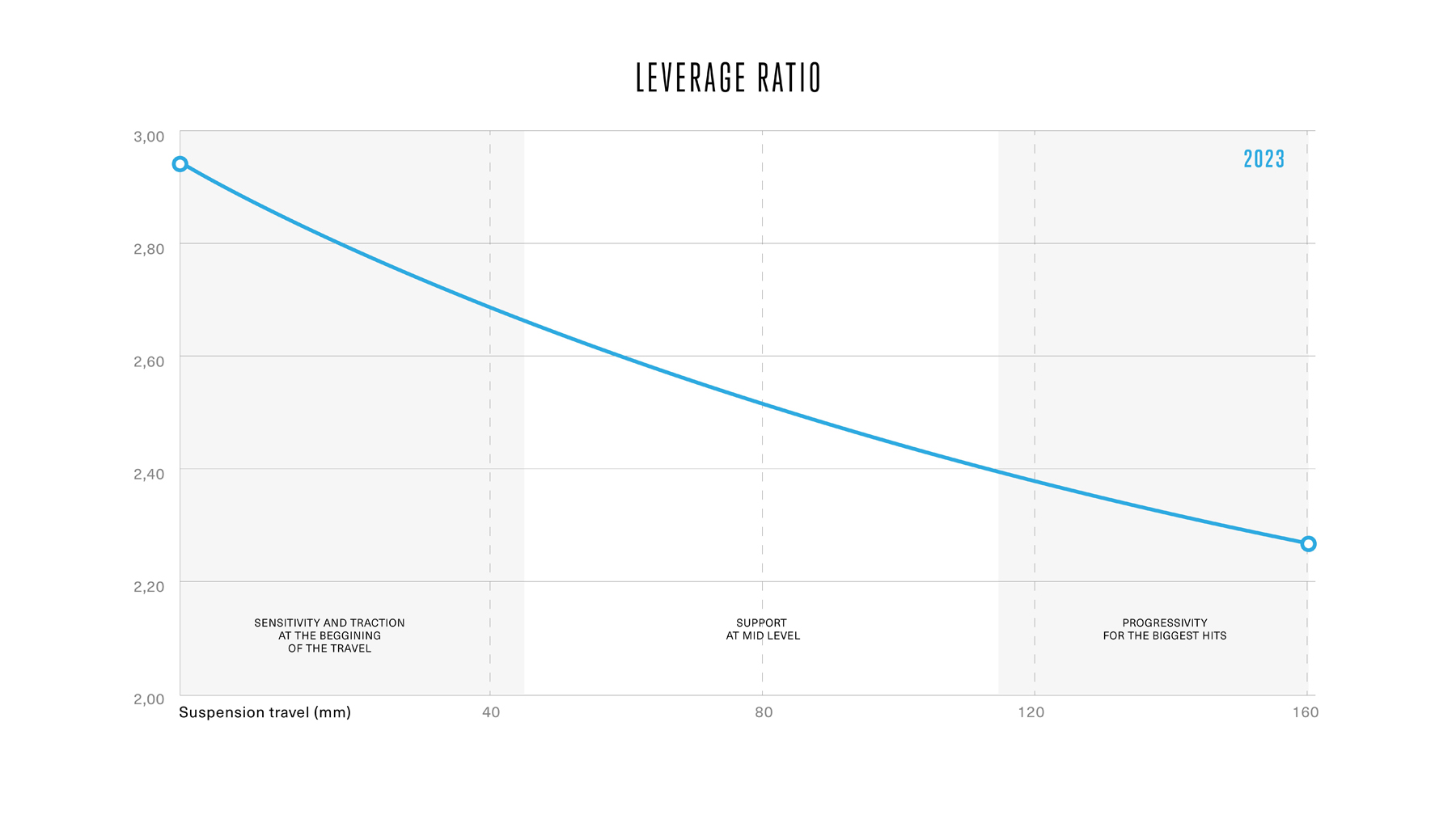
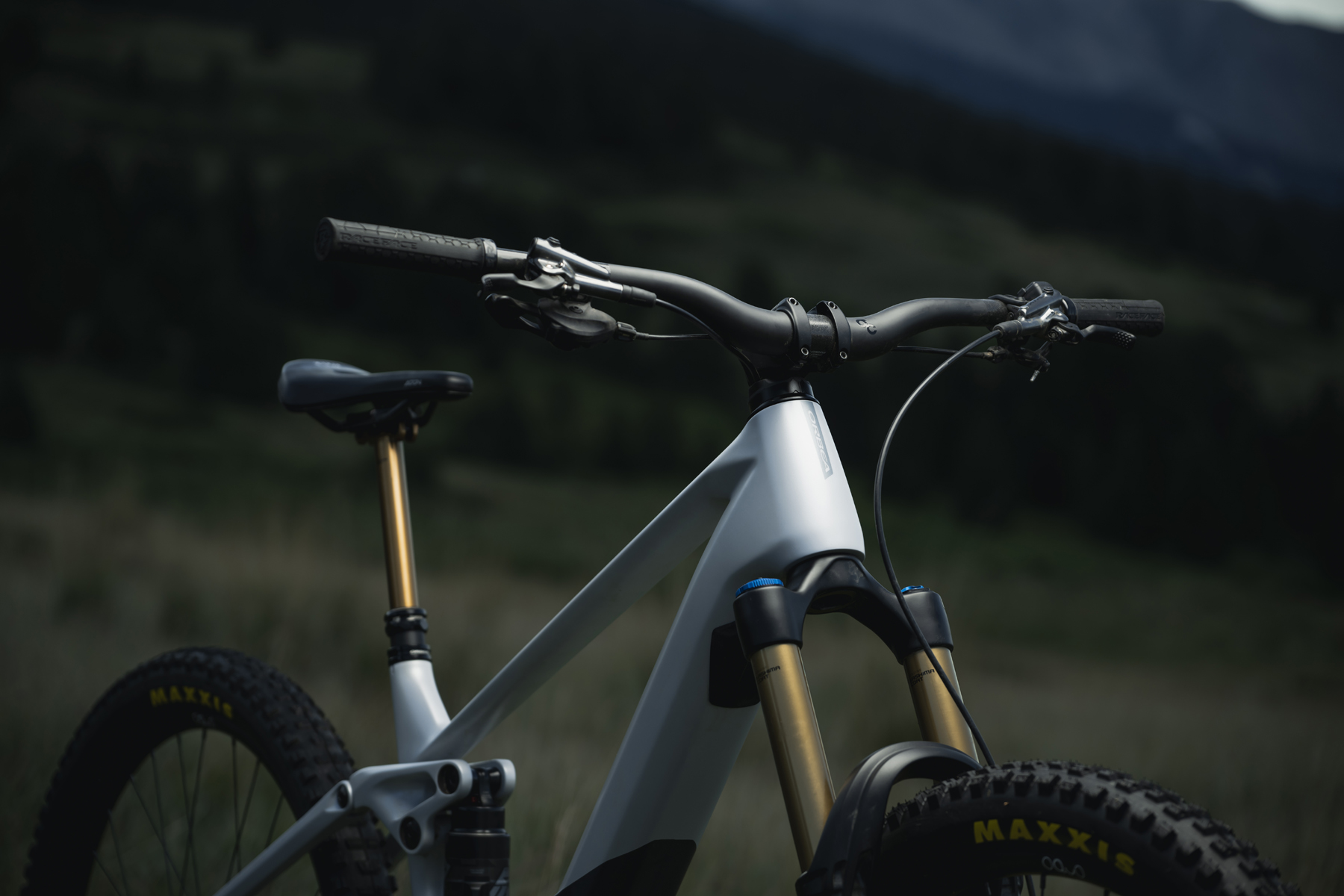
Fit & Geometry
Orbea offers the Wild in four sizes, Small through XL, and say those cover riders from about 155 to 205 cm tall (~5’1’’ to 6’9’’) though they also note that there’s a great deal of room for personal preference when it comes to bike sizing, and show uncommonly large sizing ranges with a ton of overlap, indicating that folks who want a faster, more stable setup should be inclined to size up and vice-versa.
All the sizes get a 64° headtube angle, 77.5° effective seat tube angle, and 448 mm chainstays; reach ranges from 435 mm to 505 mm, with the Medium and Large sizes coming in at 455 mm and 480 mm, respectively. That’s quite a bit longer and slacker than the outgoing Wild, and puts the new bike far more in line with modern geometry trends (and Orbea’s Rallon Enduro bike).
Unlike the Rallon, there’s no geometry adjustment or ability to set up the Wild as a mullet — it’s a dedicated 29er, only. Most of the geometry numbers are largely similar between the two bikes, with the two most significant differences being the longer chainstays on the Wild (which is fairly typical for e-bikes to help keep the front wheel planted when climbing) and the substantially higher bottom bracket on the Wild (25 mm drop vs. 35 mm on the Rallon, in the low position).
The Builds
Orbea offers the Wild in seven different builds, ranging from $5,700 to $12,000. The “H” builds come with the aluminum frame, whereas “M” builds get the carbon fiber option. As per usual for Orbea, the Wild offerings feature Shimano drivetrains across the board, and a degree of customization is available for many of the builds through Orbea’s “My-O” program on their website.
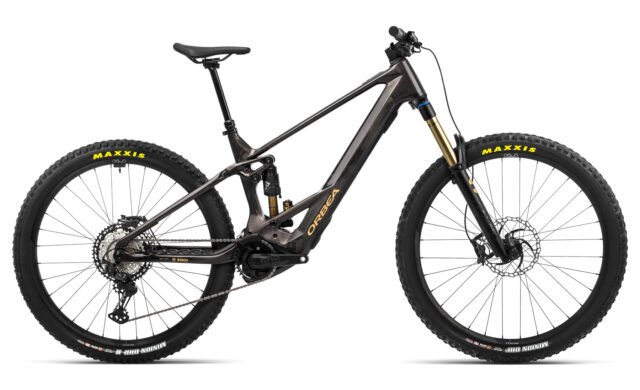
Here’s a breakdown of all the builds and their respective highlights (click each to expand):
- Motor: Bosch Performance Line CX
- Battery: 625 Wh
- Fork: RockShox 35 Silver (160 mm)
- Shock: Fox Float DPS Performance
- Drivetrain: Shimano Deore 12 Speed w/ XT rear derailleur
- Crank: e*thirteen Plus
- Brakes: Shimano MT410
- Wheels: RaceFace AR30
- Dropper Post: OC Mountain Control
- Motor: Bosch Performance Line CX
- Battery: 750 Wh
- Fork: RockShox 35 Silver (160 mm)
- Shock: Fox Float DPS Performance
- Drivetrain: Shimano Deore 12 Speed w/ SLX cassette and XT rear derailleur
- Crank: e*thirteen Plus
- Brakes: SRAM DB8
- Wheels: Oquo Mountain Control MC32 Team
- Dropper Post: OC Mountain Control
- Motor: Bosch Performance Line CX
- Battery: 750 Wh
- Fork: Fox 38 Performance (160 mm)
- Shock: Fox Float X Performance
- Drivetrain: Shimano Deore 12 Speed w/ SLX cassette and XT rear derailleur
- Crank: e*thirteen Plus
- Brakes: Shimano Deore 4-piston
- Wheels: Oquo Mountain Control MC32 Team
- Dropper Post: OC Mountain Control
- Motor: Bosch Performance Line CX
- Battery: 750 Wh
- Fork: RockShox 35 Silver (160 mm)
- Shock: Fox Float DPS Performance
- Drivetrain: Shimano Deore 12 Speed w/ SLX cassette and XT rear derailleur
- Crank: e*thirteen Plus
- Brakes: SRAM DB8
- Wheels: RaceFace AR30
- Dropper Post: OC Mountain Control
- Motor: Bosch Performance Line CX
- Battery: 750 Wh
- Fork: Fox 38 Performance (160 mm)
- Shock: Fox Float X Performance
- Drivetrain: Shimano Deore 12 Speed w/ SLX cassette and XT rear derailleur
- Crank: e*thirteen Plus
- Brakes: Shimano Deore 4-piston
- Wheels: Oquo Mountain Control MC32 Team
- Dropper Post: OC Mountain Control
- Motor: Bosch Performance Line CX
- Battery: 750 Wh
- Fork: Fox 38 Factory (160 mm)
- Shock: Fox Float X2 Factory
- Drivetrain: Shimano XT
- Crank: e*thirteen Plus
- Brakes: Shimano XT 4-piston
- Wheels: Oquo Mountain Control MC32 Team
- Dropper Post: OC Mountain Control
- Motor: Bosch Performance Line CX-Race
- Battery: 625 Wh
- Fork: Fox 38 Factory (170 mm)
- Shock: Fox Float X2 Factory
- Drivetrain: Shimano XTR
- Crank: e*thirteen Race Carbon
- Brakes: Shimano XTR 4-piston
- Wheels: Oquo Mountain Control MC32 LTD Carbon
- Dropper Post: Fox Transfer Factory
Some Questions / Things We’re Curious About
(1) We were big fans of the Orbea Rallon when we tested it earlier this year, so how much does the Wild feel like an electrified version of that bike, as opposed to something else entirely?
(2) And how does the Wild stack up to the ever-burgeoning class of full-power e-Enduro bikes more broadly?
Bottom Line (For Now)
The new Orbea Wild looks like a nice step forward for the brand’s longest-travel e-bike, with a lighter, stiffer frame, substantially updated geometry, a new drive unit, and more. And in a lot of ways, the Wild looks substantially like an electrified version of their (excellent) Rallon, so it’ll be interesting to see if that comparison continues to hold up on the trail.
FULL REVIEW
The long-travel eMTB market is a competitive space, and standing out among the competition requires more than just checking all the boxes, like range, power, travel, and geometry — there needs to be a little special sauce in there, too. Join us as we go deep to see if the Orbea Wild fits that description.
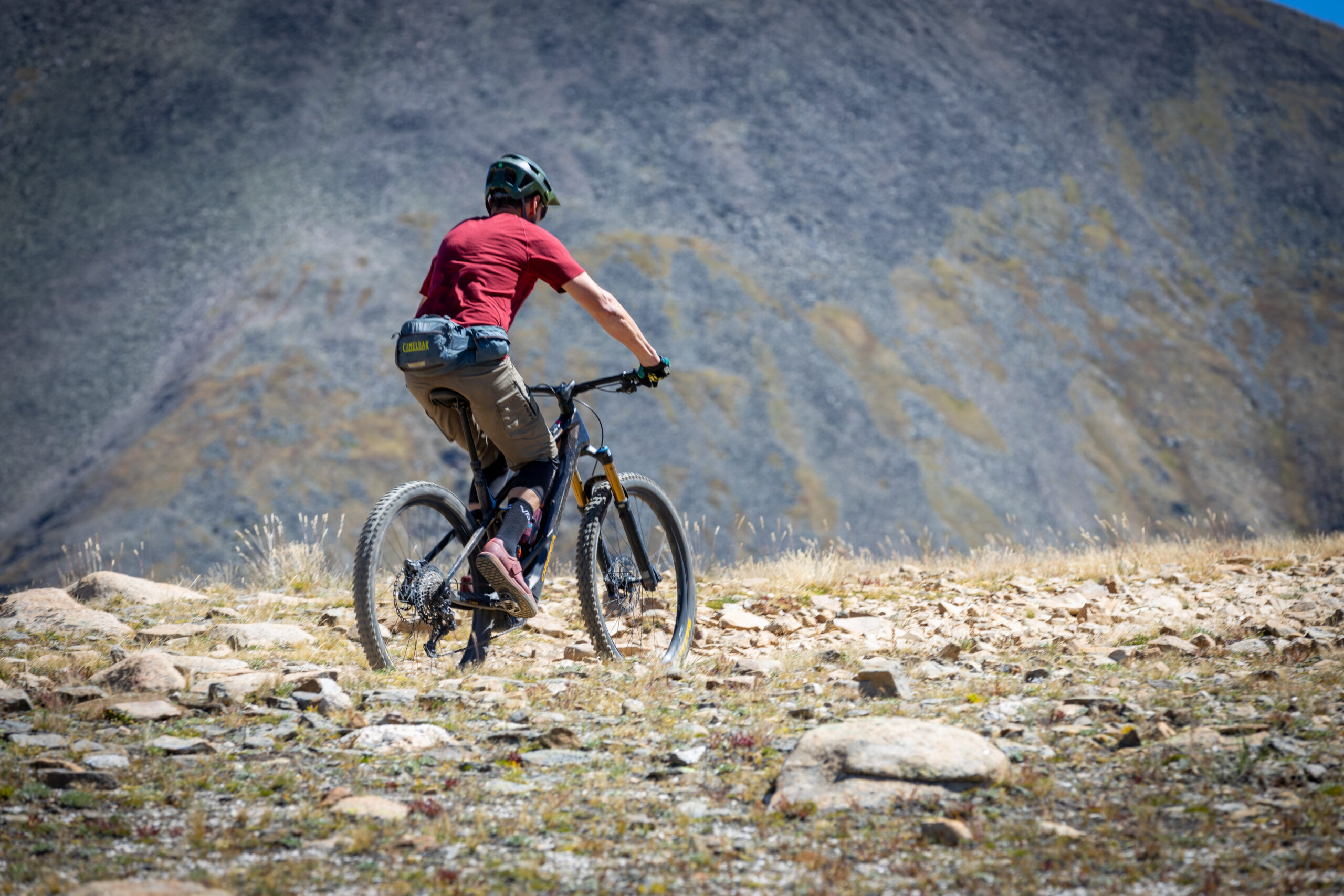
Fit & Sizing
Simon Stewart (6’, 170 lbs / 183 cm, 77 kg): We’ve been testing a size Large Wild in the M-Team build, which I would say falls into the normal sizing range for a Large frame — and that suits me nicely. With 480 mm of reach, the cockpit is in my comfort zone, and no stem length adjustments were necessary (our review bike came with a 50 mm stem). The stack height (639 mm) is lower than I tend to like for eMTBs, and as a result, I swapped out the 20 mm rise handlebar for a 50 mm one, which I much preferred. Orbea does offer a 35 mm rise handlebar option when ordering, but I think I would have still swapped that out for the 50 mm bar.
One other nice feature, sizing-wise, is the relatively short and straight seat tube, which leaves lots of room for longer-travel dropper posts. Our Large Wild came with a 170mm-travel post, and from my measurements, it could have gone up to a 200 mm one for my 755 mm seat height. Somewhat buried in Orbea’s website, you can find the manual (it’s in the “Blue Papers — Manuals” section), which on page 28 has a graph of minimum and maximum saddle heights (with the post extended). Using your saddle height measurement and this graph, you can determine what travel post will fit. They also publish maximum seatpost insertion in the frame, in the same manual, which is helpful once you have the bike and are considering an aftermarket dropper post.
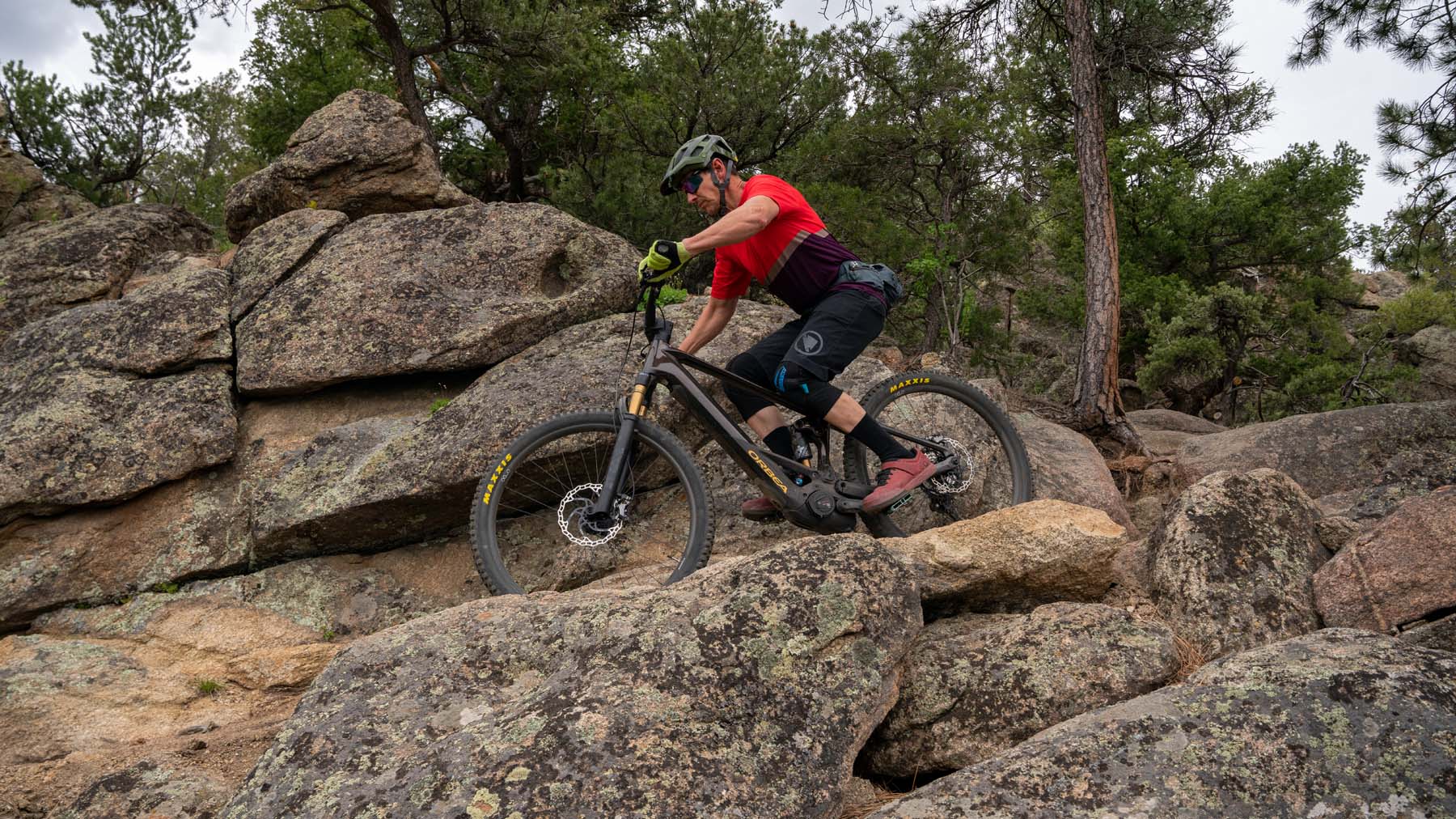
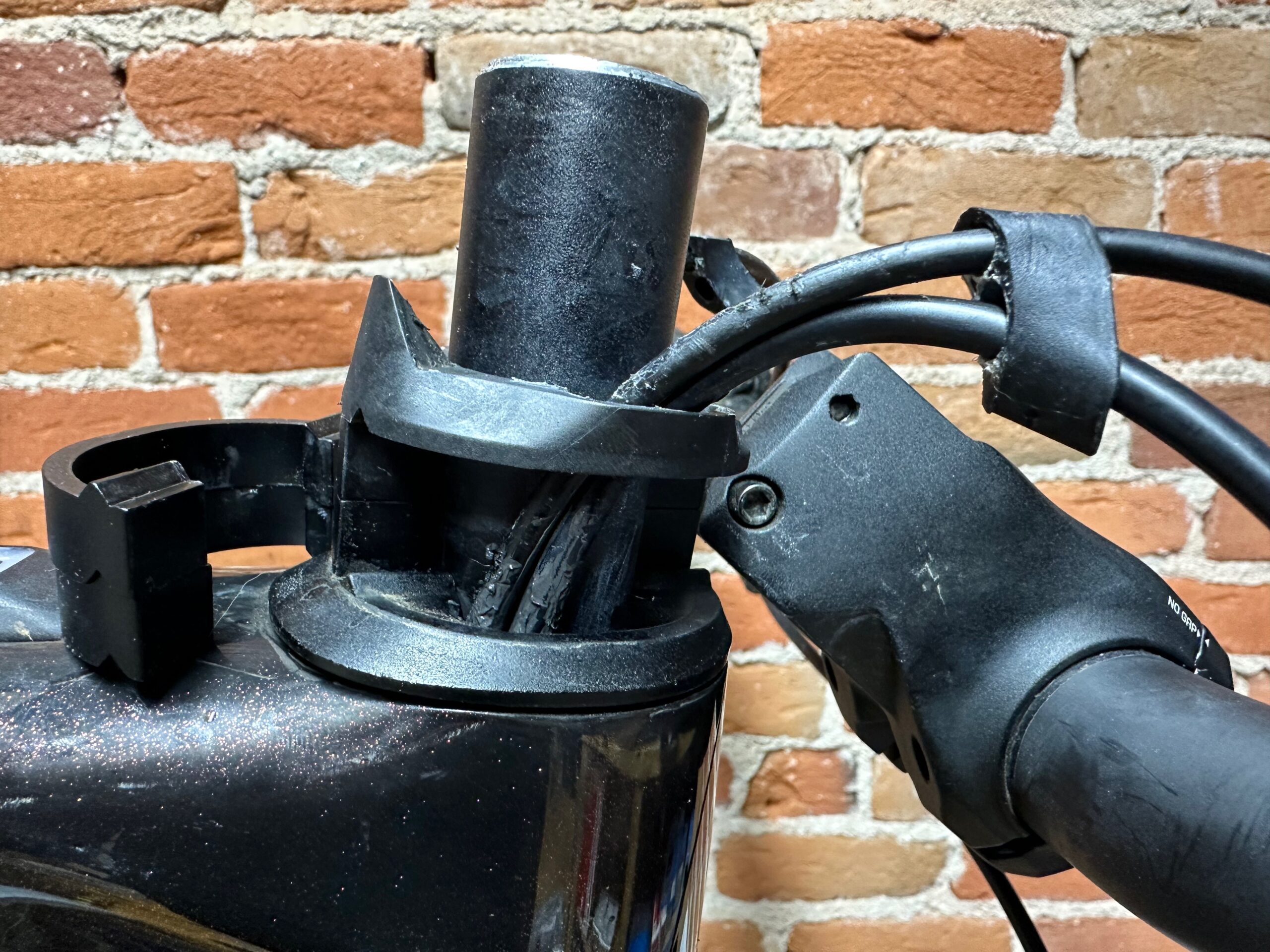
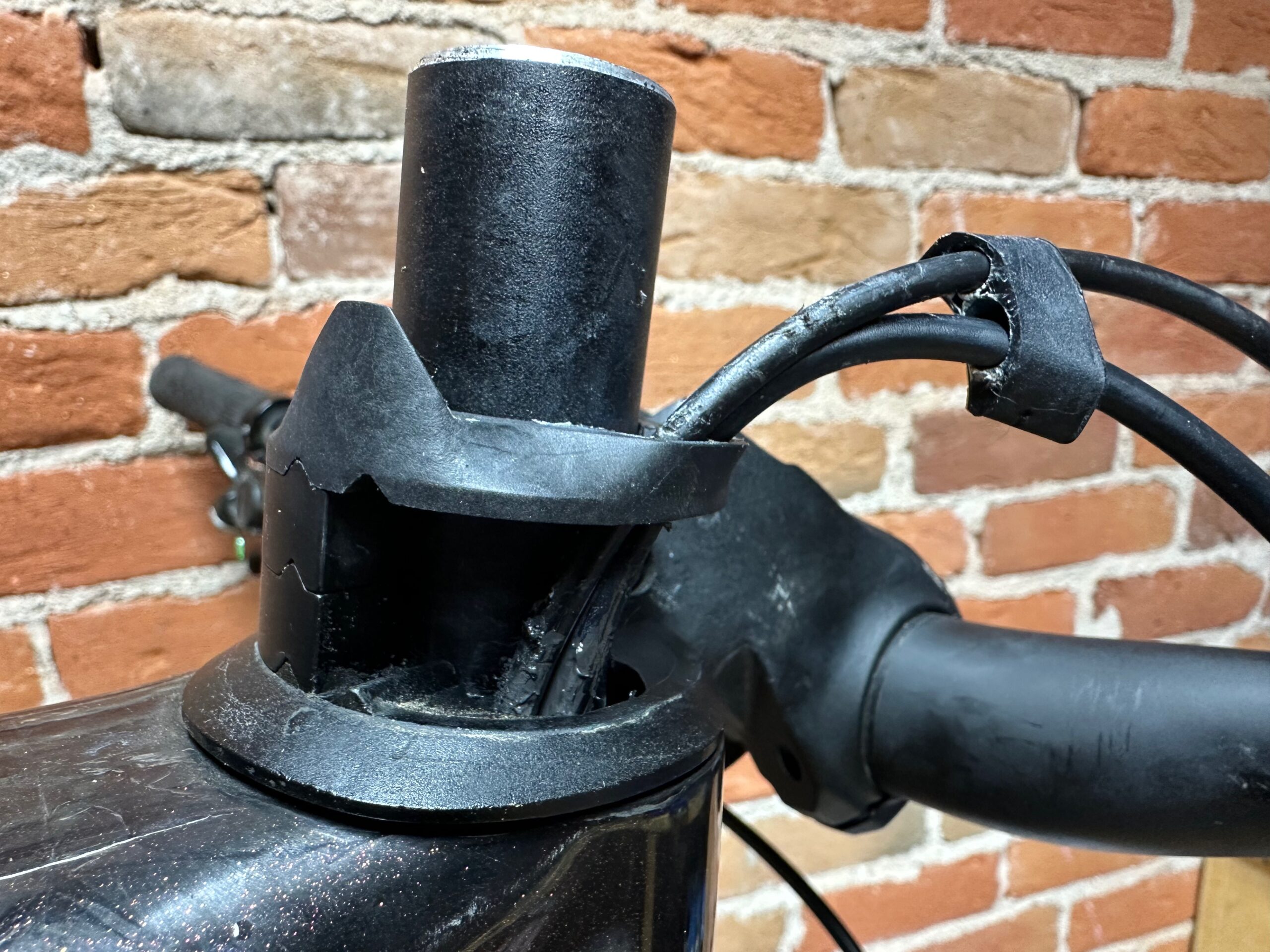
All in all, I can live with the internal headset routing, but barely — it’s a convoluted system that’s fiddly to work on, and has taken an area of the bike that was simple and made it complicated. On the plus side, I appreciate the aesthetics, and it does seem to minimize cable rattle. And If you’re the set-it-and-forget-it type, especially if you live in an area that’s nice to headset bearings, you likely won’t notice any of its quirks. For the rest of us, it’s a hard pill to swallow.
Climbing
I wrote in our Flash review how much the Wild impressed me with its technical climbing ability, and throughout the duration of the test period, it continued on that track. It was so good, in fact, that it kept me looking for harder, steeper, sketchier climbs to try and upset it, and the only times it came up short were due to rider error.
I think the combination of its stiff frame, good traction, and the customized power of the Bosch motor adds up to the Wild being one of the best eMTBs that I’ve tested when it comes to climbing steep, gnarly terrain. The frame stiffness makes a big contribution by helping the Wild stay on its line, especially during off-camber climbs, and on moto trails that have dislodged rocks strewn about. Traction never seemed to be an issue; the Wild’s suspension does an excellent job of transferring the power to the ground while also remaining active to handle technical sections.
The Bosch Performance Line CX motor’s smoothly delivered 85 Nm of torque was an asset when the trail surface loosened up. Customizing the ride modes, which is easily done via the app (something I’ll cover in more detail below), was another key to maximizing the Wild’s inspired climbing performance.
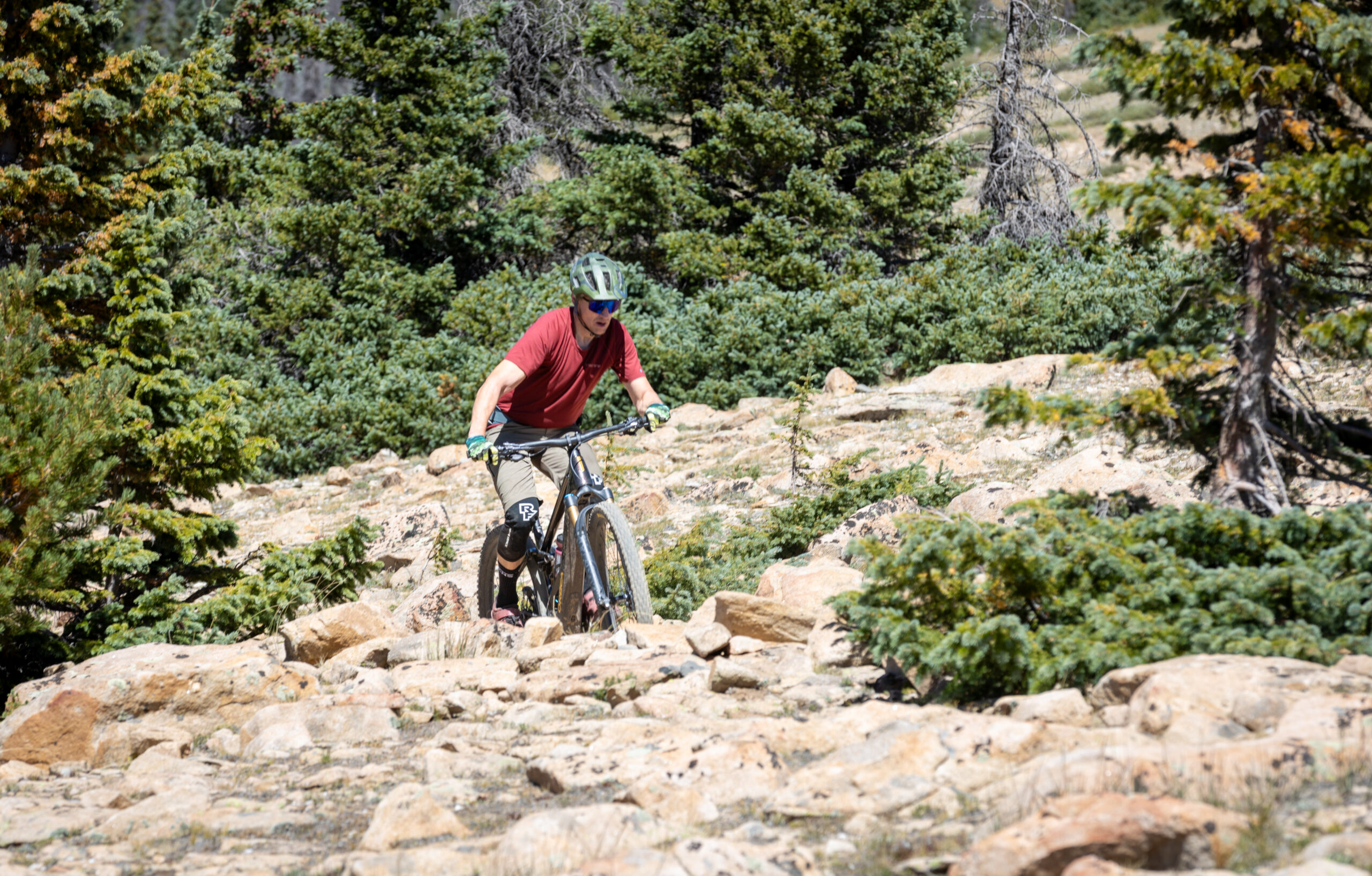
Switching gears from technical climbing to big alpine days with a mix of Jeep roads and single- and double-track trails, the Wild turned out to be an excellent high-country companion. The smooth Bosch motor was easy to live with, and managing the assist levels equated to impressive range. The Wild’s 750 Wh battery had a longer range than the 700 Wh Specialized Levo and was neck and neck with the Pivot Shuttle LT, which has a fractionally larger 756 Wh battery. On top of that, Bosch has recently released the Powermore range extender, which adds 250 Wh — combining the two would net 1000 Wh, which makes my head spin thinking about the ride possibilities.
I also mentioned in the Flash Review that I seemed to be banging the motor’s skid plate often on ledgy up-and-down moves — this did continue to happen, but hasn’t caused any issues since the burly skid plate was obviously designed to handle the abuse.
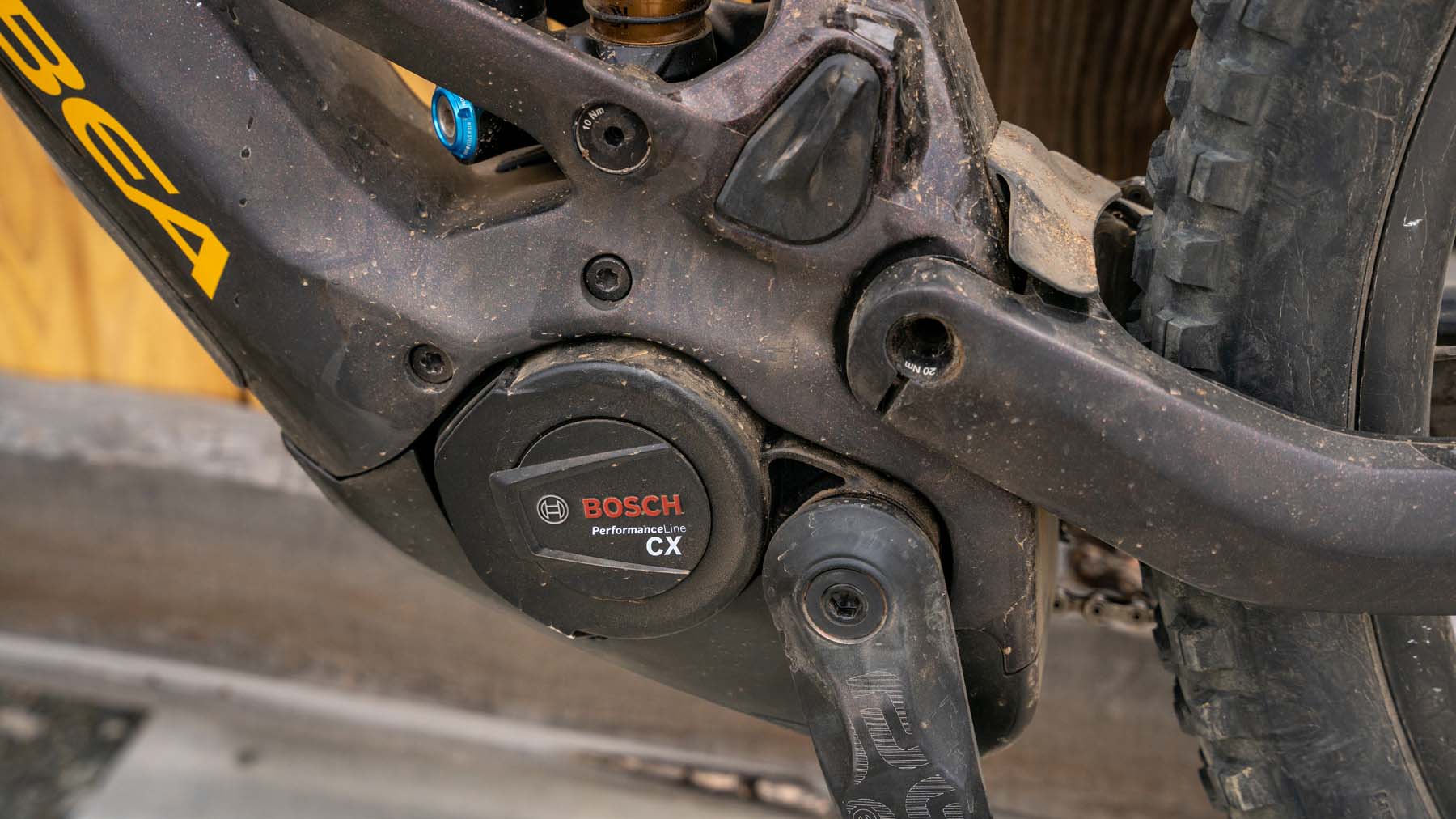
Descending
It was obvious right away that the Wild has some fairly significant Enduro racing intentions, and it absolutely comes across as a bike that likes speed. The M-Team spec on our review bike comes with 160 mm of front and rear travel, and combined with its well-sorted geometry, has a nicely balanced feel. The Fox Float X2 rear shock seemed well matched to the suspension kinematics and overall suspension performance was quite good. When comparing the Wild to other eMTBs in our recent test fleet, I would position it above the Specialized Levo, which didn’t feel quite as composed as the Wild at higher speeds, and slightly below the Pivot Shuttle LT and Shuttle AM, both of which I found had better small-bump sensitivity.
Another standout characteristic was the Wild’s cornering performance. I typically favor mixed-wheel size bikes in the cornering department, but the 29er Wild challenged that preference. I think its frame stiffness is a definite contributing factor, since I could throw it into high-speed rocky cornering sections and it would hold its line beautifully — to borrow a ski term, it felt like it “carved” corners. On mixed-wheel size bikes, I find the fun comes from squaring off corners with a slashing rear wheel, but with the Wild, the fun came from the way it encouraged me to brake late, throw it in hard, and carry deceptively fast speeds through the exit.
I love how well the Wild handles anything I’ve thrown at it. I haven’t been on a bike in recent memory that is so unflappable in any situation, especially when I’m pushing hard and making mistakes — the Wild just shrugs it off. Once again, I have a hunch that a lot of the credit ought to go to its frame stiffness and overall feeling of precision.
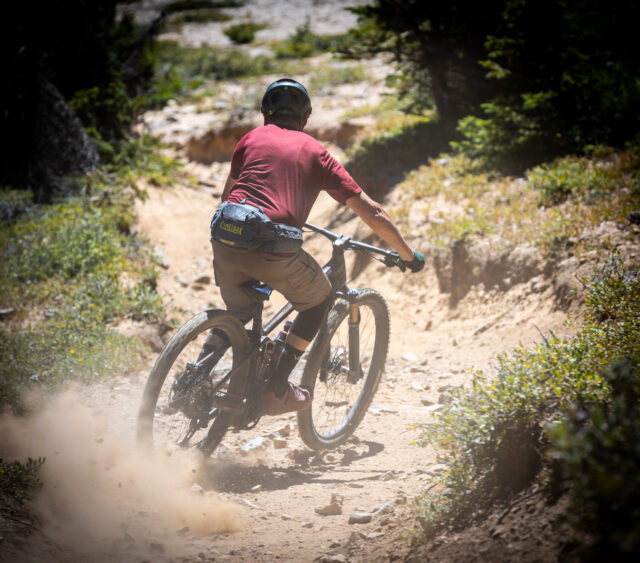
Now, it needs to be noted that the M-Team spec on our review bike has a 160mm-travel Fox 38 fork. Either moving up to the top-spec M-LTD or customizing the M-Team build will bump the fork travel to 170 mm — I think when spec’d with the longer-travel fork, the Wild’s strong Enduro intentions would be even more apparent. I can see how deciding what fork travel to opt for could be a tough decision, and I think it’s helpful to remember that fork travel can be changed by swapping air springs for a fraction of the cost of a new fork.
The Build
I found the Wild’s stock M-Team build on our test bike to be solid. The two issues I mentioned in the Flash review — wishing it had a longer-travel dropper post and a higher-rise bar — are both matters of personal preference and could have easily been remedied by customizing the build when ordering (although they only offer a 35 mm rise handlebar option, and I ended up liking it with a 50 mm rise bar). Orbea offers a ton of customizable options, including paint and decal colors, almost to the point of it being a bit overwhelming.
Orbea’s house brand Oquo wheels have been excellent. They haven’t needed any attention, spoke tension is still spot on, and they have stayed true. I’m a fan of DT Swiss hubs in general, and the Oquo MC32 Team wheels feature the DT Swiss 350 Hybrid hub, which has been fortified with a hardened steel 24-tooth ratchet, steel ring gears, and oversized bearings to manage the higher loads of eMTBs. When heading out on big high alpine days, especially on a powerful eMTB, it sure is nice to have confidence in a key component of the bike when putting power to the ground — one that, if it were to fail, would leave you fully dead in the water.
Orbea’s other house brand, Orbea Components (OC), supplied the bar, stem, and dropper post, and there have been zero issues with any of those components. The OC MC20 dropper post has been basically invisible, just doing its job with no drama — exactly what you want from a dropper post, so it deserves some credit.
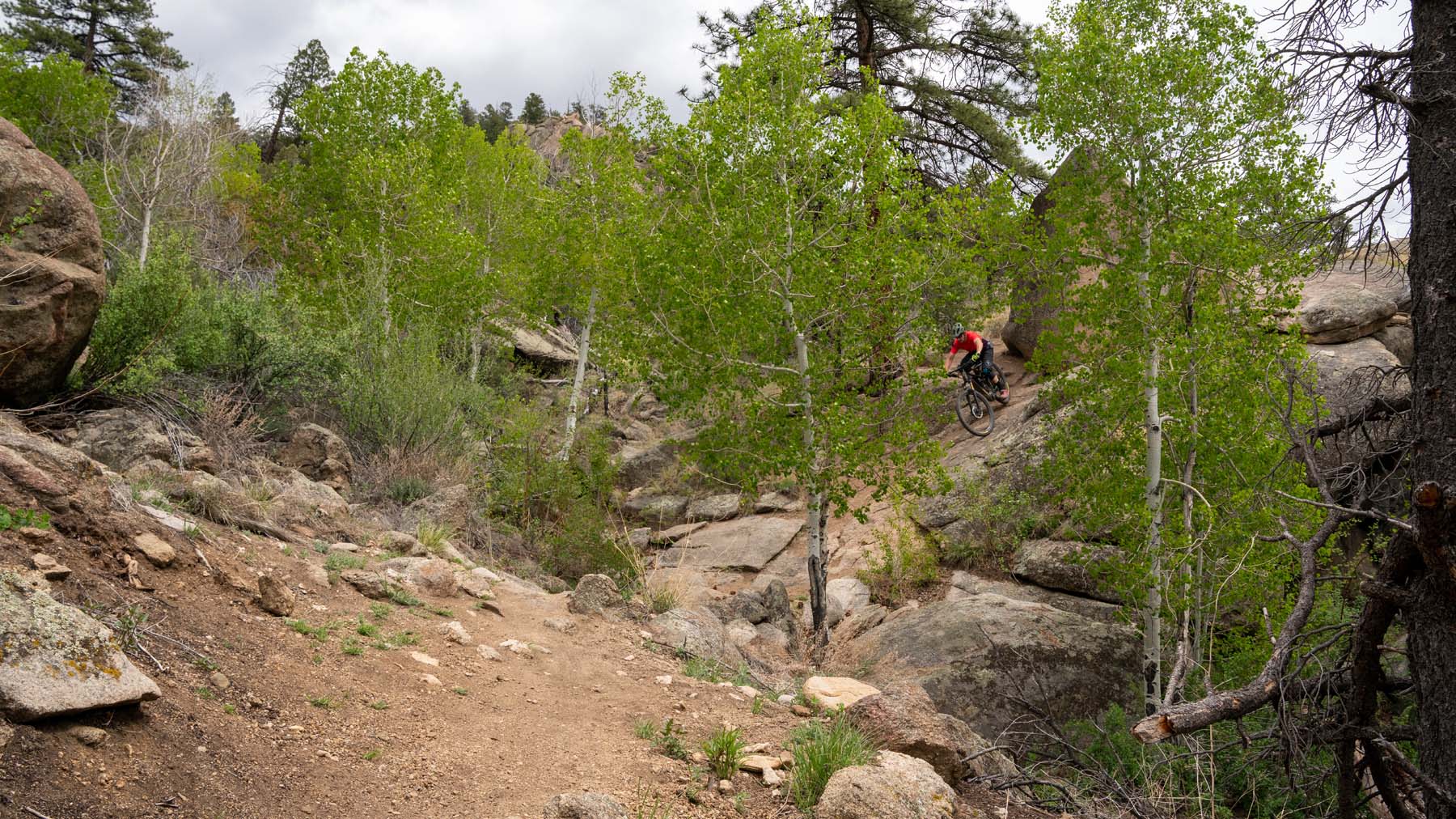
The only part that didn’t fare so well was the Fox Float X2 shock. On a particularly chunky and long alpine descent, it emptied its damper fluid all over the motor and bottom bracket area, leaving no compression or rebound damping, resulting in a pogo stick for a shock. Rewinding to when I first took the Wild out of the box, I heard the tiniest bit of slurping from the damper, which did mostly go away after a few cycles, but it definitely foreshadowed the catastrophic failure to come. Orbea quickly sent out a Fox Float X Factory, as that’s all they had on hand to replace it.
Drive System and Range
The Wild packs one of my favorite drive systems, the Bosch Performance Line CX. Part of the Bosch Smart System, the Performance Line CX is Bosch’s second most powerful motor, giving up the top step to the Performance Line CX Race motor. The overall system integration is a close second to Specialized’s drive systems, and in some regards is a touch better — e.g., the wireless remote (currently, only Bosch offers a wireless remote).
The smooth power delivery is one of my favorite qualities of the Bosch motors, which I would compare to another German brand, BMW, and the legendary smoothness of their inline-six engines. I think the Bosch motors feel the smoothest out of all the ones I’ve been on so far, including Shimano, Specialized / Brose, Rocky Mountain, Fazua, and TQ.
Between the Orbea Wild and the Pivot Shuttle AM, I now have spent plenty of time with Bosch’s minimalist integrated top tube System Controller display. The display’s spartan information — just ride mode and battery power in 10% increments — has been adequate, but given a choice, I would prefer a tiny bit more. On longer rides where battery management is key, I find that having the exact battery percentage is helpful. On the Wild, this information is available but requires taking out your smartphone and connecting via the eBike Flow app.
I see what Bosch is going for with the integrated top tube System Controller: the goal seems to be to provide a simple, uncluttered top tube display with just the essentials (for riders not interested in being inundated with information), then offer a variety of optional handlebar-mounted displays for the folks who crave all the data. Another neat trick they’ve incorporated in the eBike Flow app is the ability to also use your smartphone as the display. Bosch then makes a mount called the SmartphoneGrip that securely mounts your phone to the handlebars, and also wirelessly charges it. It’s all very clever, and in theory, is a great way to appeal to both types of riders. I fall somewhere in the middle, but definitely will not be mounting anything to the handlebars, especially not my phone. So in the end, I personally want my display to be integrated in the top tube, and have more information — like the Specialized TCU.
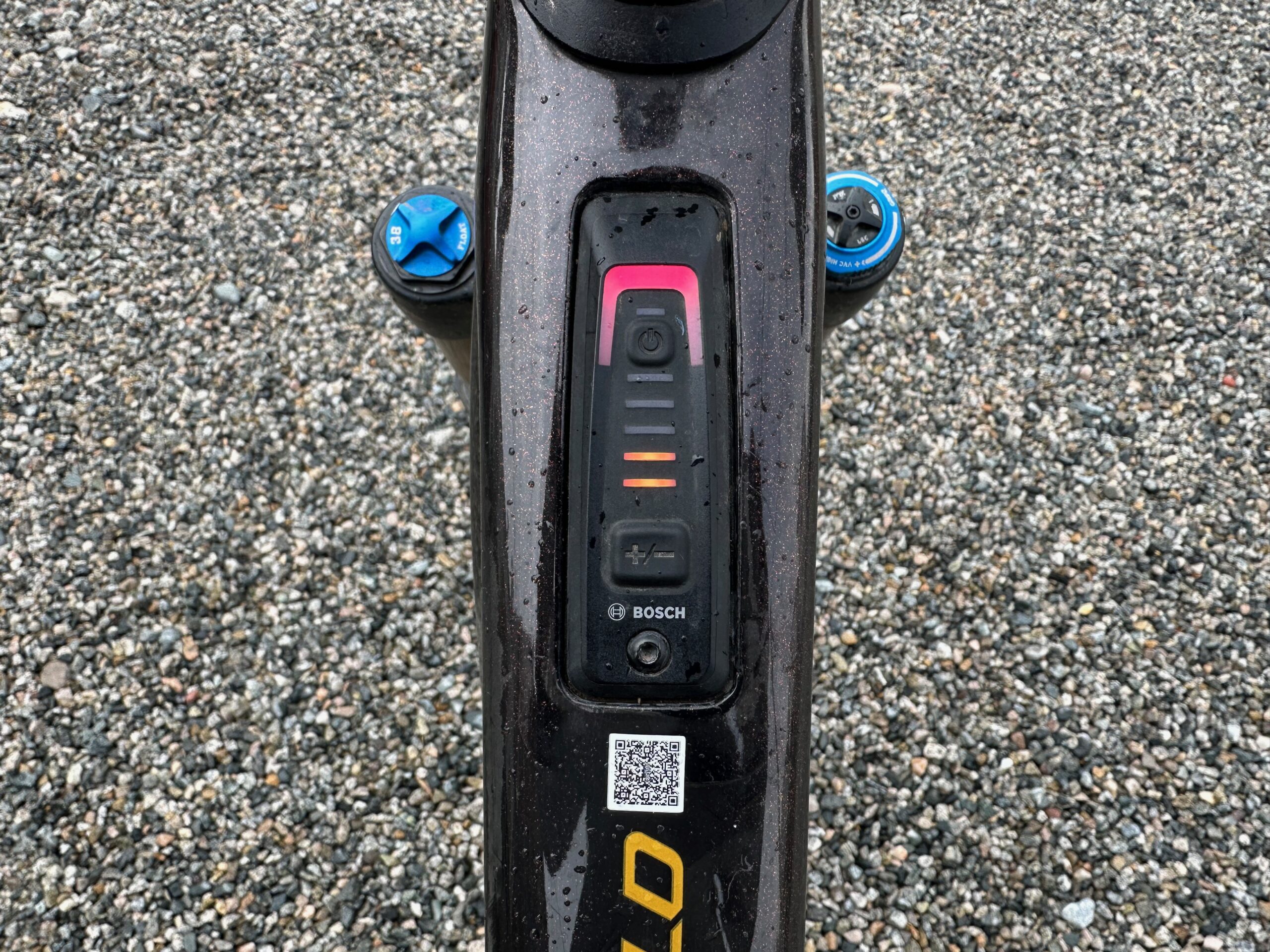
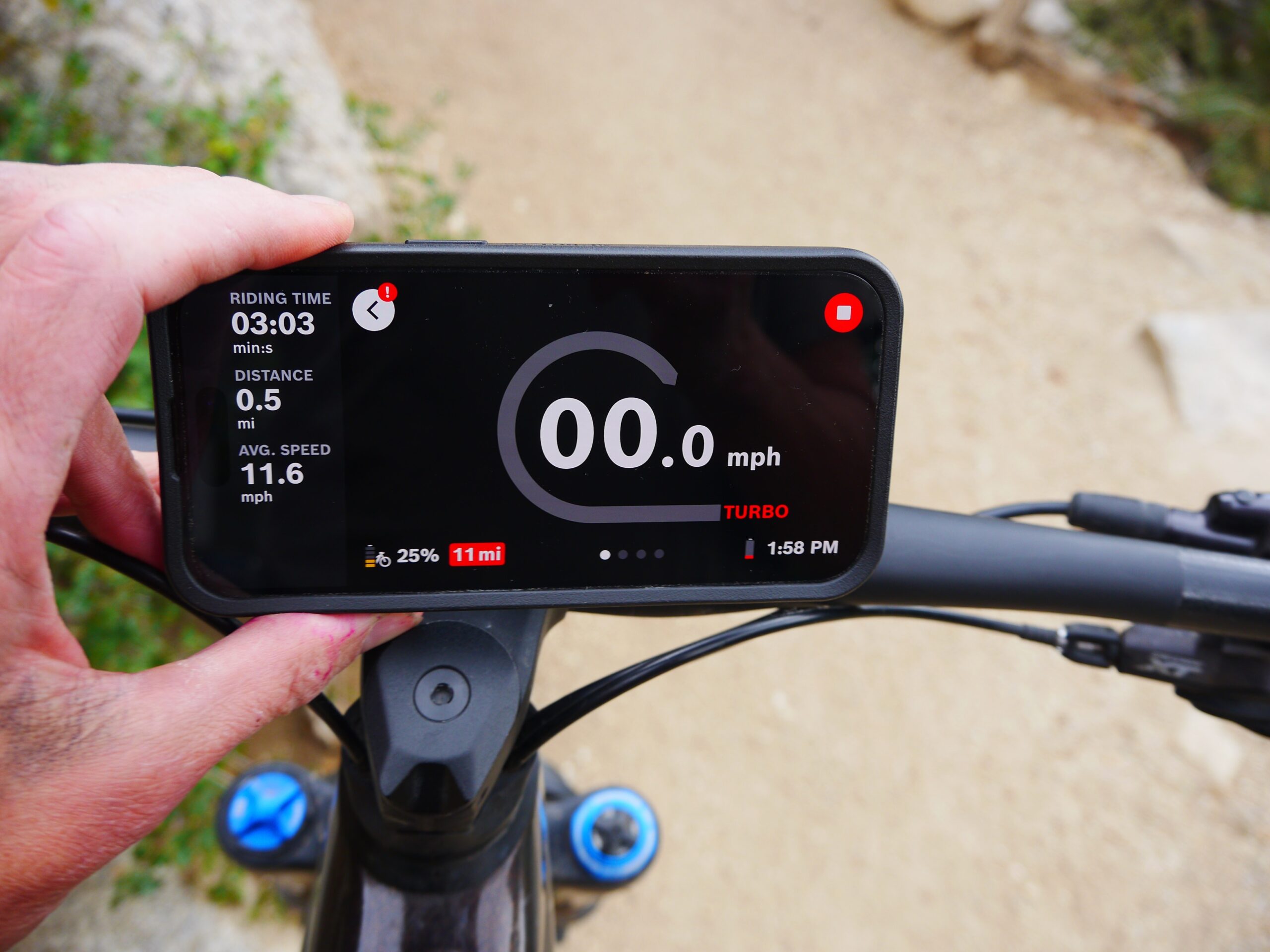
Thankfully, the Bosch eBike Flow app has been intuitive and easy to use, since I found that customizing the riding modes was necessary to get the power delivery characteristics I was looking for. I customized the Turbo mode basically just for the crazy steep and technical climbs I love doing on eMTBs. This involved turning up the Assistance and Dynamic tunable parameters to the maximum +5 setting. Turning up the Assistance parameter makes full power available with less rider input, and turning up the Dynamic parameter will speed up the motor’s response to pedal input — essentially this makes all the power available faster, but as to be expected, also takes a toll on the battery.
One of the other things that I love about the Bosch eBike Flow app is that you can individually customize all the parameters of each ride mode. Take, for example, the above tuning of the Turbo mode, which doesn’t have any impact on the other three riding modes. This is a great feature and allowed me to create a specific full monty climbing mode, and then keep the other modes more civilized for regular trail riding and battery preservation.

Who’s It For?
I think the Wild will resonate with more aggressive riders, and especially ones who live in areas with steep technical terrain. Also, if pinning on a number plate and entering some e-Enduros is on your radar, it definitely doesn’t hurt that the Wild is a proven e-Enduro race bike (and feels ideal for racing, even for non-pros), not to mention the top-spec M-LTD comes with the hotrod Bosch Race motor.
Bottom Line
The Orbea Wild is an impressive package with all the attributes of a competitive Enduro racing eMTB but with a dash of civility built in. The Wild is one the most competent go-anywhere eMTBs I have ridden to date. I was blown away by how much its frame stiffness affected all areas of performance, from climbing to descending, in such a positive way. If a longer-travel eMTB is what you’re interested in and you put a premium on all-around competency — but with a penchant for speed — then the Wild deserves to be on your shortlist.
Deep Dive Comparisons
BLISTER+ members and those who purchase our Digital Access Pass can check out our Deep Dive comparisons linked below. Get our Digital Access Pass to view all our Deep Dives and Flash Reviews, or become a BLISTER+ member today to get access to that and a LOT more, including the best worldwide Outdoor Injury Insurance, exclusive deals and discounts on skis, personalized gear recommendations from us, and much more.
Check out our Deep Dive comparisons of the Orbea Wild to see how it compares to the Pivot Shuttle LT, Pivot Shuttle AM, and Specialized Turbo Levo.

